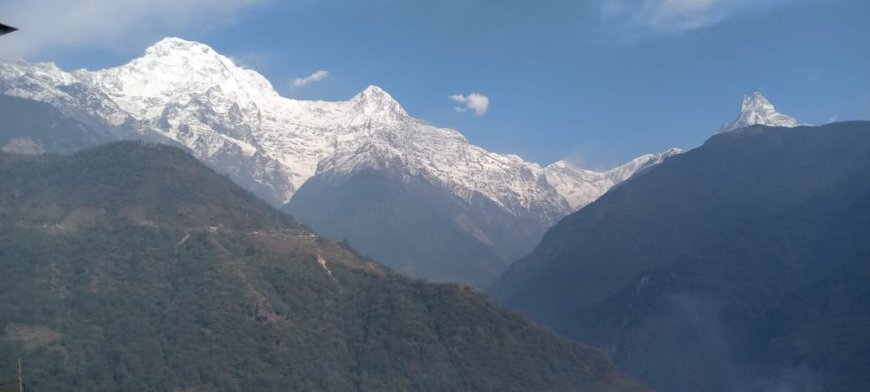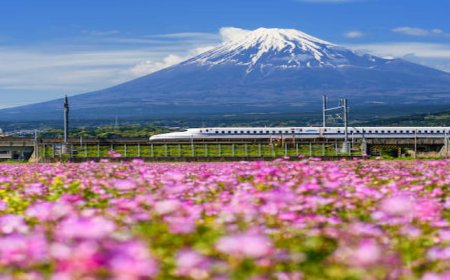How to Get a Stunning View From Annapurna Base Camp
Looking for the ultimate trek in Nepal? The Annapurna Circuit delivers epic views, high passes, and timeless traditions.

To catch a great view fromAnnapurna Base Camp (ABC), you need good timing, a bit of prep, and some patience. Sitting at 4,130 meters in the Annapurna Sanctuary, ABC gives you an amazing 360-degree view of the Himalayas, including Annapurna I, Machapuchare (Fishtail), Hiunchuli, and Annapurna South. The best time to see all this is at sunrise when the light hits the snow-capped peaks, turning them golden and creating an unforgettable scene.
For the best experience, plan your trek in spring (March to May) or autumn (September to November) when the weather is typically clear. Steer clear of the monsoon season because clouds can block the view. Watching the sunset can be just as spectacular, so staying the night at base camp is a good idea.
Make sure to dress warmly and get up earlythe mornings at ABC are chilly but beautiful. A quick morning hike around base camp can give you fresh views of the mountains. If youre into photography, you'll appreciate how the soft morning light brings the ridges and icefalls to life.
And don't forget to enjoy the night skywhen its clear, the stars over Annapurna are incredible. With hardly any light pollution, it feels like youre underneath a massive dome of stars.
In the end, to soak in the best views from Annapurna Base Camp, come prepared, arrive at the right time, and take a moment to enjoy the beauty around you. Its more than just snapping a photo; its about experiencing something truly special. Let the grandeur of the Himalayas amaze you.
Choose the Right Season for Clear Skies
The best time to visit Annapurna Base Camp (ABC) is in spring (MarchMay) or autumn (OctoberNovember). That's when you get clearer skies and better weather. During these months, the air feels fresh, visibility is great, and there's less chance of rain or clouds. The monsoon brings fog and heavy rain, covering the mountains, while winter can have snow, but often too many clouds. Picking the right season helps you enjoy amazing views of the Annapurna range, so you can catch beautiful sunrises and sunsets without worrying about the weather.
Start Early for Sunrise Magic
One of the most stunning sights at ABC is the sunrise over Annapurna I. Get up earlybefore dawnto find a good spot and set up your camera or just soak in the view. When the first light hits the snowy peaks, they shine in shades of pink, orange, and gold. This moment is quick but unforgettable. Plus, its quieter in the morning, which adds to the peaceful vibe. Early mornings often have clearer skies, too, making it perfect for your photos and thoughts.
Find the Best Viewpoints Around the Camp
While the main base camp area offers nice views, just a short walk can lead you to even better spots. Check out higher ground or head towards the ridge that looks over the glacier and mountains. Some trekkers head to the camps far side for a broader view or a closer look at peaks like Machapuchare. Dont hesitate to explore a bitthese little side trips can enhance both your photos and your experiences.
Time Your Trek for Golden Hour Light
The golden hourright after sunrise or before sunsetgives the best natural light for capturing mountain shots. This soft light reveals details in the snow and rock, creating long shadows and dramatic peaks. The colors in the sky shift beautifully during this time, adding a dreamlike feel to the scenery. If you get to ABC in the afternoon, keep an eye out for that golden light before sunset. In the morning, wake up early to catch the warm hues as the sun starts lighting up the mountains.
Use a Good Camera or Smartphone Wisely
You dont need fancy equipment to take great photos at Annapurna Base Camp. A good smartphone camera can do the trick if you use it smartly. Try panorama mode for wide mountain shots and use manual settings for better results in low-light conditions. If you have a DSLR or mirrorless camera, a lightweight tripod can help with stability for those sunrise and sunset shots. No matter what you use, keep your lenses clean and protect them from the cold and moisture. Sometimes, just stepping back and including interesting foreground elements like prayer flags can really improve your shot.
Be Patient and Wait for the Clouds to Clear
Mountain weather can change quicklyclouds might suddenly block your view. Stay hopeful. Often, the clouds will clear briefly, revealing the mountains in all their glory. Find a spot to sit and stay warm, and just wait. Your patience can lead to some amazing moments when the light breaks through. Many of the best views happen right after a storm or when the weather changes. Instead of rushing, take your time to enjoy the surroundingsyou might be rewarded with a one-of-a-kind scene.
Include Nearby Peaks in Your Frame
At Annapurna Base Camp, youre surrounded by incredible peaks like Annapurna I, Hiunchuli, and Machapuchare. Try not to focus on just one peakframe several in your photos. This gives a better sense of scale and beauty. Including features like ridgelines, glaciers, and rocky formations helps tell the story of the landscape. Using wide-angle shots or panoramic modes can showcase the full expanse of the Himalayas. Adding nearby elements like prayer flags or fellow trekkers can add interest to your images.
Capture the Reflection at Sunrise or Sunset
When the weather is calm, small glacial streams and pools around ABC can reflect the snow-covered peaks and colorful skies. These reflections are best during sunrise or sunset when the light is softer. Look for these natural mirrors, often along the edges of the camp, and try getting low to the ground to capture both the mountains and their reflections. These shots create drama and impact, making your photos stand out. Just be careful around water and icy edges, especially in the morning when things can be slippery.
Avoid Crowds for a Peaceful Experience
ABC can get crowded, especially during busy trekking seasons. For a quieter experience, plan to reach viewpoints early or check out less popular areas around the camp. Many trekkers stick near the lodges, so even a short walk can give you some solitude. Being in a calmer space lets you really take in the beauty of the Himalayas without distractions. Youll also have more freedom to snap photos and reflect on your experience. Being alone in such a vast place adds to the emotional impact of the trip.
Stay Overnight for Both Sunset and Sunrise Views
To catch the best views, consider staying overnight at ABC. Watching the sunset and sunrise gives you the chance to experience the best light conditions. In the evening, see how the golden light gradually fades and the stars come out. Early the next morning, catch the sun as it rises over the mountains. Each moment offers something unique, completing your visual journey. Plus, staying overnight lets you rest and fully soak in the special vibe of this incredible Himalayan destination.
Where's the best view of the Annapurna Circuit?
One of the top spots to take in the views on the Annapurna Circuit is from Thorong La Pass, which stands at 5,416 meters. It's the highest point of the trek, and youll get amazing views of the whole Annapurna range, Dhaulagiri, and the valleys around. Poon Hill, although a bit off the main path, is really popular too, especially for its stunning sunrise views over the snowy peaks. Other good spots include Manang, Yak Kharka, and Upper Pisang, where you can soak in the beautiful mountain scenery that changes with the weather and sunlight. If you love mountains, the Annapurna Circuit will impress you.
Where's the best view of the Annapurna range?
For a great view of the Annapurna range, Poon Hill near Ghorepani is the best place to go. An early morning hike to the top gives you breathtaking sunrise views of Annapurna South, Machapuchare, Dhaulagiri, and Hiunchuli. The morning light makes the snow-covered peaks glow golden. If youre on the Annapurna Circuit, dont miss Thorong La Pass for its stunning high-altitude views, too. Other nice spots include Sarangkot near Pokhara and Mardi Himal Base Camp, where you can enjoy the beauty of the range with fewer people around. These viewpoints show off Annapurnas rugged allure.
What mountain can you see from Annapurna Base Camp?
When youre at Annapurna Base Camp, youre in a natural bowl surrounded by towering mountains. The star here is Annapurna I, which stands at 8,091 meters and is the 10th highest mountain on the planet. You can also see Machapuchare, known for its unique double peak, along with Hiunchuli, Annapurna South, Tent Peak, Gangapurna, and Glacier Dome. The views are incredible because the base camp feels like you're right in the middle of the Annapurna Sanctuary. The mountains seem close, creating a surreal feeling as you look up at these huge Himalayan giants all around.
What's special about Annapurna Base Camp?
Annapurna Base Camp (ABC) is unique because it offers 360-degree views of some of the most famous peaks in the Himalayas. Unlike other base camps, ABC is in a natural amphitheater called the Annapurna Sanctuary, so it feels like youre surrounded by mountains. It's one of the few places where you can stand right under an 8,000-meter peak, like Annapurna I, and still feel safe and reachable. The trek to ABC takes you through different landscapes, from rice fields and rhododendron forests to alpine areas, combining beautiful sights with a taste of local culture along the way.







































